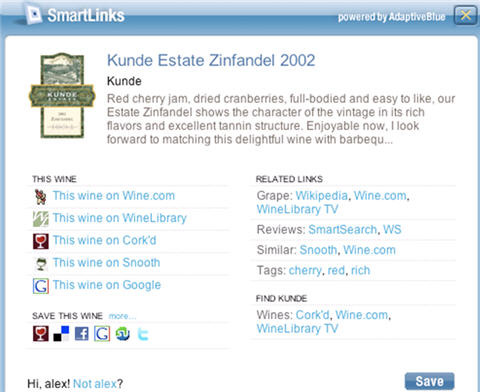AdaptiveBlue places SmartLinks in context

AdaptiveBlue is making its SmartLinks available to bloggers and others site creators to embed on their Web pages. SmartLinks offer a top-down semantic layer on Web pages, automatically identifying object types (such as books, movies, recipes, restaurants, people, etc.) and then providing links to more in-depth, relevant data. Clicking on a SmartLinks button brings up a SmartLinks pane within the context of the page.
"Users have more choices to get more information about an object. SmartLink takes advantage of knowing what object you are looking for and brings the best links into the page. Like Mahalo, we pick the links," said Alex Iskold, CEO of AdaptiveBlue. "If you think about what a link is, it's like an atom of the Web. It typically points to pages. SmartLinks is a step toward a smarter Web, adding semantics and shifting attention from pages to objects."
SmartLink can insert links on the fly and requires a line of Javascript, and AdaptiveBlue provides a plug-in for WordPress and simple installers for Google's Blogger and Six Apart's TypePad.
In addition, users of the AdaptiveBlues's BlueOrganizer can save content from SmartLinks. SmartLink Search initiates a vertical search, based on Google's custom search engine, across a hand-picked set of sites designed to produce more relevant results. So far, AdaptiveBlue has vertical search results for 20 categories.
AdaptiveBlue makes money through affiliate revenue from partners like Amazon. Bloggers can replace AdaptiveBlue with their own Amazon affiliate relationship and garner the revenue.
